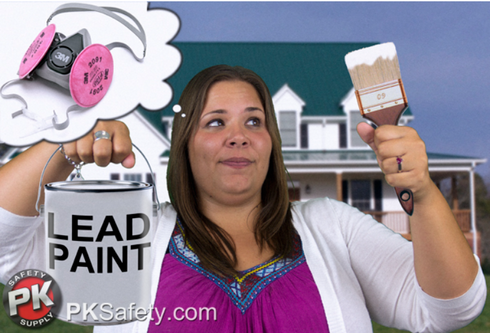Lead Tests for the Home: Do They Work?
Just about everyone understands that physical contact with lead is bad for you. It's a serious health hazard for adults and it's an even more serious hazard for children. It can cause nerve problems, slowed growth, hearing problems, and outright brain damage for your children. For you, it can cause muscle and joint pain, hypertension, or reproductive problems. You really don't want your home contaminated with lead.
Back in the day, people didn't know that lead was so dangerous, so they painted the interiors of most homes with lead-based paints and put in lead plumbing. Luckily, around 1978, it became illegal to do this, but many older homes still have lead-based paints in their interiors.
Kids chew on things. They gnaw on baseboards, walls, anything they can get into their mouths. If your house is filled with lead paints, that lead will get into your children's systems, and they'll get sick. If you have lead-based paints in your house, you need to get them out, and if you're repainting or renovating a house with lead-based paints, you need to protect yourself from lead particulates with a respirator, like our and 3M P100 Particulate Filters. Lead contaminants don't even need to be breathed in to be harmful! For full body protection, add our DuPont Tyvek 400 Disposable Hazmat Coverall Suit.
The most important thing is to find out if there's dangerous lead in your house. If you're buying or leasing a home built before 1978, landlords and sellers are required by law to disclose any known information on lead or lead-based paint hazards in the home. But sometimes they might not know, and when your health and your family's health are at stake it's best to check yourself.
Of course, the most reliable way to do this is to have a certified lead-based paint professional come in to test your home for you. You can contact the National Lead Information Center for help in finding a certified professional near you.
You might just want to do it on your own, though, and there are a number of home lead testing kits available. This isn't a thing you want to leave up to chance. You need to know for certain that this kit is reliable. You don't want to overlook a serious danger.
In 2008, the EPA's Lead Renovation, Repair and Painting (RRP) Program developed a rule for determining mathematically if a testing kit is good enough. It's a tough rule to satisfy, and up to now only three lead testing kits are up to it. One of them is the State of Massachusetts Kit, which is only available to certified lead-based paint professionals in Massachusetts, but the other two are available from hardware stores or online. The 3M LeadCheck Kit and the D Lead Kit are both extremely reliable, certified, and available in a number of locations. They can detect lead contaminants in ferrous metals, wood, plaster, and drywall. If you want to be absolutely certain about whether or not there are lead-based paint hazards in your house, these are the kits to buy.
If your house is clean and safe, great! If not, don't panic and start disturbing it without careful planning. Ask lead removal experts for advice and plan any cleanup thoroughly. If you do end up doing the cleanup yourself, you'll want our respirators, filters, and hazmat suits to keep you safe from the lead particulates you'll be exposed to in the process. You won't regret it.
Recent Posts
-
Promoting Safety: National Work Zone Awareness Week is April 15-19, 2024
Each year, the National Work Zone Awareness Week (NWZAW) places the spotlight on the importance o …Apr 11th 2024 -
Understanding 4 Gas Monitors: How They Work & Why They Are Important
In today’s increasingly dynamic industrial landscape, 4 gas monitors have emerged as critical com …Apr 8th 2024 -
April Showers Require Workers to Wear Hi-Vis Safety Rain Gear
While April showers bring May flowers, they also bring challenges, particularly for those working …Apr 1st 2024





